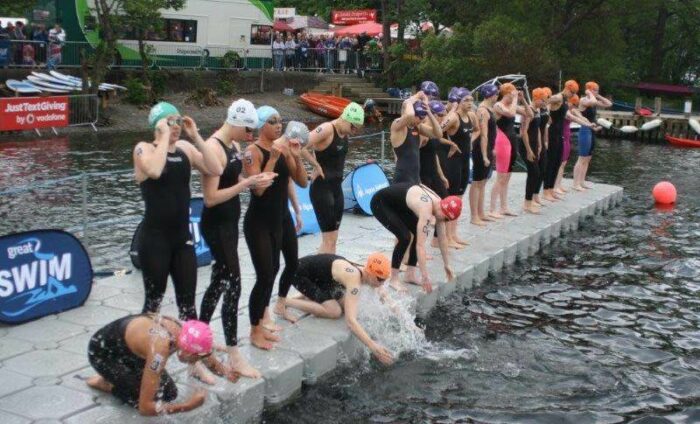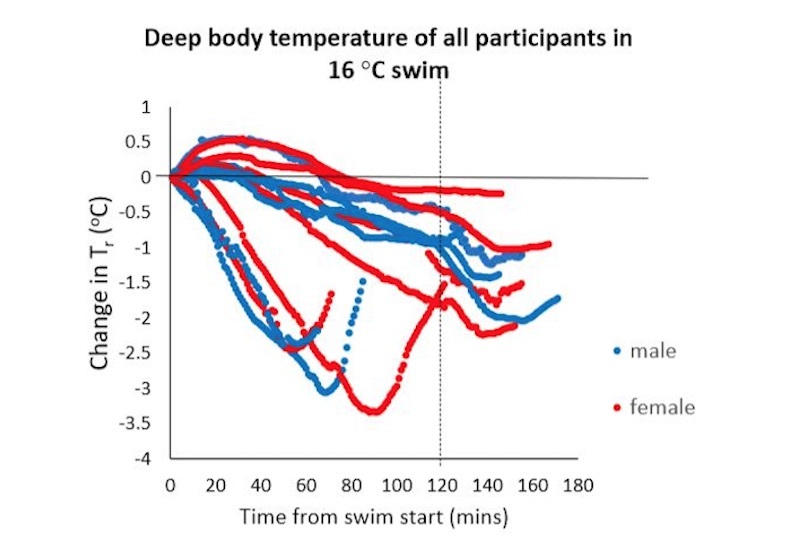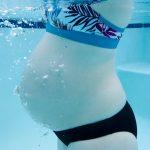
Keeping warm in cool water
A look at the research study behind FINA’s controversial ruling on wetsuit use in elite swimming events
Back in 2014, researchers at the Extreme Environments Laboratory at the University of Portsmouth studied the effects of swimming in cold water on core body temperature. The study was funded by the international governing bodies for swimming and triathlon and among the questions they wanted to answer was: what is a physiologically safe lower water temperature for elite endurance swimming?
At the start of this year, FINA (the international governing body for aquatic sports) introduced a new rule for marathon swimming mandating the use of wetsuits in water below 18 degrees Celsius and making them optional below 20 degrees due to the findings of the study.
It’s important to note that the study report did not recommend this rule. However, the research concluded that: “For lean, elite level swimmers, 16°C and 18°C will cause hypothermia in under two hours. For a shorter swim, 16°C is possible. Swimmers are likely to be coolest some time after exiting the water.”
The reason that two hours is significant is this is about the time taken for elite swimmers to complete a 10km swimming marathon. The current minimum water temperature for FINA sanctioned races is 16 degrees.
Many of you reading this will consider that swimming for two hours in 16-degree water is a breeze. Have the scientists gone mad? Can’t those elite swimmers just toughen up a bit?
Let’s dive a bit deeper into the research. Each participant in the study had their height and weight recorded along with their skin fold thickness, which is a measure of the amount of subcutaneous fat. During the swim, volunteers had their core body temperature continuously monitored via a rectal thermometer. Heart rate was tracked using a chest-strap monitor. At periods throughout the swim, the swimmer was fitted with a special snorkel that collected expired air, from which the researchers could estimate how hard he or she was working. Average, normal body temperature is around 37 degrees. Hypothermia was defined as having a core body temperature of below 35 degrees. Any participant who became hypothermic (and several did) was immediately withdrawn from the experiment and rewarmed in a hot bath.
With all this data, what did they find?
Firstly, and perhaps not surprisingly, there is a linear relationship between loss in core body temperature and time in the water. The longer you swim, the colder you get. Secondly, the only two things that affect the rate of cooling are how hard you are working and a morphology factor, which is based on your skin fold thickness and overall size (larger people have a greater surface area of skin). This is basically what Channel swimmers have long known: fat keeps you warmer and large rounded people cope much better with cold water than small skinny ones.
Interestingly, experience of swimming in cold water had no correlation to the rate of cooling. Toughening up makes no difference. The rate at which you cool down is determined by the laws of physics, not your willpower. In addition, swimmers were very bad at assessing how cold they were, and more experienced outdoor swimmers were the worst! Experienced swimmers fail to recognise when they are becoming hypothermic.
It should be noted that a requirement for the study was that swimmers were lean, so while there was variety in body fat percentage, it was all at the low end. We therefore don’t know if the linear relationship between body fat and rate of temperature loss continues indefinitely as fat levels increase further. The question of whether there might be an optimum level of body fat for cold water swimming has not been answered, nor do we know if more is always better – at least when it comes to keeping warm.
On the other hand, those with extremely low body fat can become hypothermic very quickly. A parallel study looked at triathletes and asked them to swim for just 20 minutes in 14-degree water – and the skinniest ones had to be pulled out early, even though they were super fit and working extremely hard.
The research actually throws up an interesting question. Given that experience has no impact on the rate of cooling, and in fact appears to harm your perception of cold stress, why bother with acclimatisation? When your muscles cool down, they don’t function so well and will eventually stop working, which can result in swim failure. One hypothesis is that acclimatisation increases our ability to keep swimming as we get colder. Acclimatised swimmers lose heat just as quickly but are able to keep swimming for longer despite the heat loss. However, this theory would be difficult to test. Allowing a volunteer’s body temperature to drop below 35 degrees would be frowned on for both safety and ethical reasons.
The final point to note from the study is that “afterdrop” is real. In fact, the rate of temperature drop temporarily increases when you exit the water. In 16-degree water, body temperature continued to fall for more than 20 minutes after exiting the water and fell by nearly half a degree on average. This is why it’s so important to immediately wrap up warmly after swimming in cool water.
So, are FINA right to impose the wetsuit rule? Some people think that coping with the cold is part of the test of open water swimming. If that means you need to fatten up, so be it. On the other hand, many coaches and swimmers are happy about it. To swim 10km in under two hours requires a lot of training: so much so that putting on additional weight is almost impossible – and is possibly undesirable for the races at the other end of the temperature spectrum. We also should consider that under-18s compete in these races. It’s one thing for an adult to make a conscious decision to risk hypothermia but it wouldn’t be right for coaches or parents to push youngsters into swimming in unsafe conditions.
The FINA regulations don’t impact Channel swimming or events by organisations such as the BLDSA, so those can happily continue to allow and encourage non-wetsuit swimming.

The content for this article is based on a presentation to the December 2016 FINA Sports Medicine Congress in Ontario and an interview with Jane Saycell, the lead researcher on the project.








